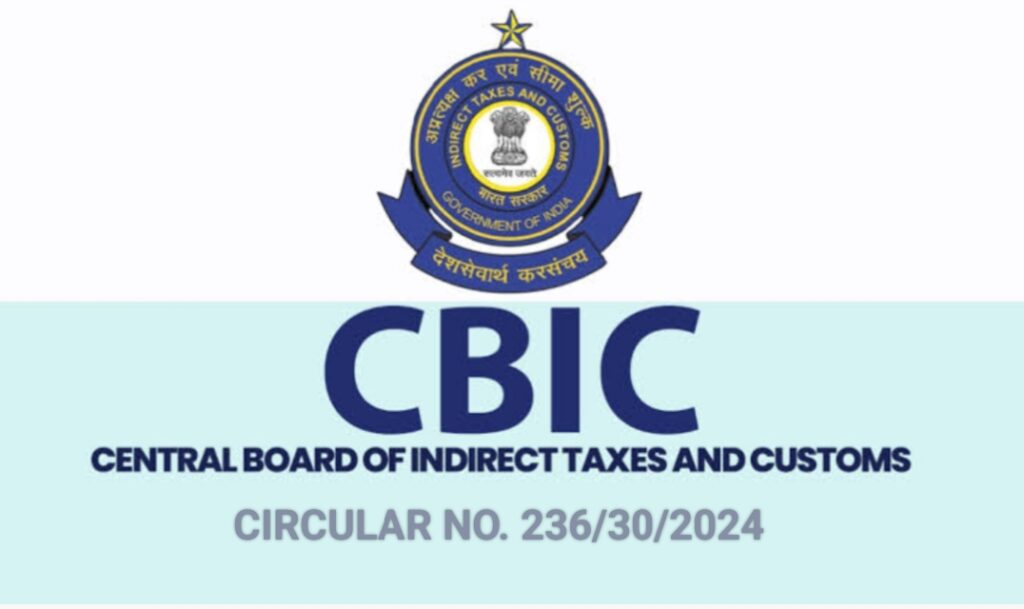In the context of GST, the phrase “regularized on an as is, where is basis” means that tax payments made at a lower rate, or exemptions claimed by taxpayers, will be accepted. Additionally, no refund will be provided if the tax has been paid at a higher rate.
As is/ As is Where is Meaning: Instances have been brought to the attention of the Board (CBIC) regarding ongoing confusion among field formations and businesses about the scope of regularization done on an “as is” or “as is, where is” basis. This issue has arisen in relation to various GST circulars issued to clarify applicable GST rates and the proper classification of specific goods and services. These clarifications have been made based on the recommendations of the GST Council during its meetings.
1. The GST Council, during its 54th meeting held on 9th September 2024, recommended issuing a clarification to explain the intent behind the regularization decisions made in previous meetings. In response, this circular is being issued under the powers conferred by Section 168 of the CGST Act, 2017, to clarify the scope of regularization on an “as is” or “as is, where is” basis.
2. Circulars have been issued based on the recommendations of the GST Council to regularize GST non-payments or short-payments for past periods on an “as is” or “as is, where is” basis in certain cases involving the supply of goods or services. This regularization for previous periods was done based on the Council’s recommendations, particularly in situations where genuine doubts arose due to competing entries with different GST rates in notifications or where diverse interpretations led to discrepancies.
As a result, some suppliers paid a lower GST rate (including nil rates due to exemption entries), while others paid a higher GST rate. It has also been clarified that taxpayers who paid GST at the higher rate in such cases will not be eligible for a refund.
3. The term “as is, where is” is commonly used in property transfers, indicating that the property is being transferred in its current condition, with all faults and defects, whether visible or not, accepted by the transferee. In the context of GST, the phrase “regularized on an as is, where is basis” means that tax payments made at a lower rate, or exemptions claimed by taxpayers, will be accepted. Additionally, no refund will be provided if the tax has been paid at a higher rate.
The GST Council’s intent is to regularize payments made at lower rates, including nil rates, based on the taxpayer’s declared tax position, as a full discharge of tax liability. A taxpayer’s tax position is reflected in the returns they file, where the applicable tax rate or exemption entry on a particular transaction or supply is declared.
4. In cases where matters have been regularized on an “as is” or “as is, where is” basis, involving two competing GST rates, and some suppliers have paid GST at the lower rate or at a nil rate where one of the competing rates was nil under a notification entry, while others have paid at a higher rate, the payment made at the lower rate will be treated as full tax payment for the period that is regularized.
Illustration 1:
In a situation where some taxpayers have paid 5% GST on the supply of “X,” while others have paid 12%, and the GST Council recommends reducing the rate to 5% prospectively with a regularization of past payments on an “as is, where is” basis—effective from 1st December 2023—this means that for the period prior to 1st December 2023, the 5% GST paid by taxpayers will be considered as full payment of tax, and they will not be required to pay the 7% differential between 5% and 12%. However, taxpayers who have paid GST at the 12% rate will not be eligible for any refund.
Illustration 2:
In a situation where some taxpayers have paid 5% GST on the supply of “X,” while others have paid no GST due to genuine doubts about an exemption entry for “X,” and the GST Council recommends clarifying that the applicable rate is 5% and regularizing past payments on an “as is, where is” basis—effective from 1st December 2023—this means that for the period prior to 1st December 2023, non-payment of GST and declaring such transactions as exempt in returns will be treated as full discharge of tax liability. Taxpayers will not be required to pay the 5% differential. However, those who have paid 5% GST will not be eligible for any refund.
Illustration 3:
In a situation where there is an interpretational issue between 5% and 12% GST rates, and some taxpayers have paid 5%, others have paid 12%, while certain taxpayers have not paid any GST on the supply of “X,” and the GST Council recommends clarifying that the applicable rate is 12%, with past payments regularized on an “as is, where is” basis—effective from 1st December 2023—this means that for the period prior to 1st December 2023, the 5% GST paid by taxpayers will be treated as full payment, and they will not be required to pay the differential between 5% and 12%.
Taxpayers who paid 12% will not be entitled to a refund. However, the regularization will not apply to cases where no tax was paid, and in such instances, the applicable 12% GST will be recovered.
To Access the official notification of the Circular CLICK HERE
READ MORE
CBIC Notification 23/2024 – CT: Waiver of Late Fee for Delayed Filing of GSTR-7 Return

